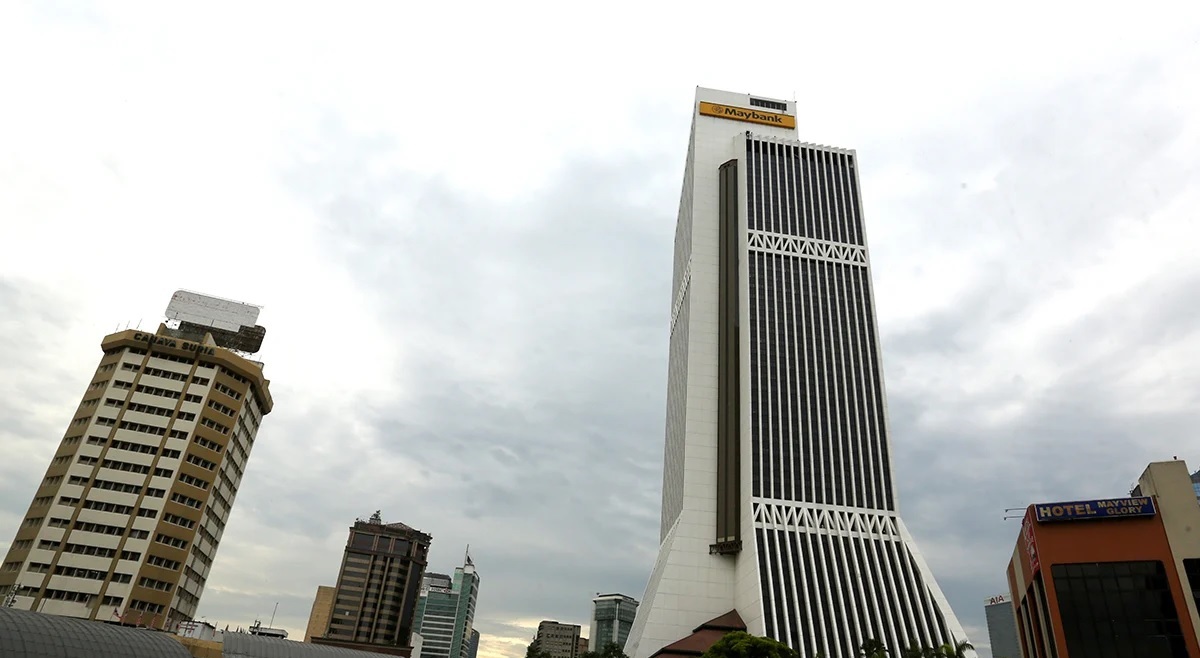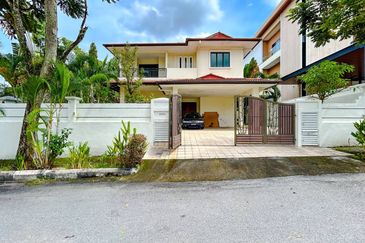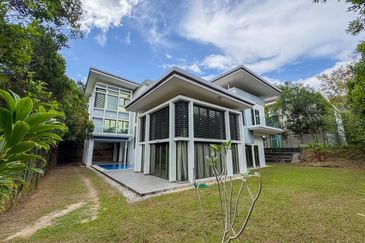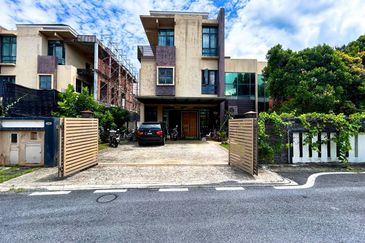
- This is because the 35-year-old building is deemed to be well maintained while having a strategic prime location in the city centre and potentially competitive rental rate if office space supply remains abundant two years down the road, according to experts in the property sector.
- Appetite towards Menara Maybank has come under the spotlight recently after Malaysia's largest bank announced its relocation to Merdeka 118, the world's second tallest building owned by Permodalan Nasional Bhd (PNB), Maybank's largest shareholder with a 40% stake.
PETALING JAYA (Sept 14): Menara Maybank (pictured) appears to have an advantage over its fellow older buildings in terms of securing tenants in the Klang Valley when owner Malayan Banking Bhd (Maybank) moves its head office to Merdeka 118 in 2025.
This is because the 35-year-old building is deemed to be well maintained while having a strategic prime location in the city centre and potentially competitive rental rate if office space supply remains abundant two years down the road, according to experts in the property sector.
"Office buildings in prime locations can attract tenants although the quality of the tenants may not be first-tier companies," said KGV International Property Consultants executive director Anthony Chua.
"For Menara Maybank, which is not only located in a strategic location but is [also] a well-maintained building despite its age, the possibility of attracting tenants into a building associated with the brand and reputation of the bank cannot be discounted," he told theedgemarkets.com when contacted.
Appetite towards Menara Maybank has come under the spotlight recently after Malaysia's largest bank announced its relocation to Merdeka 118, the world's second tallest building owned by Permodalan Nasional Bhd (PNB), Maybank's largest shareholder with a 40% stake.
"Putting aside the PNB-Maybank relationship, the move is an upgrade for the country's premier bank to be located in a state-of-the-art building," said Chua.
CBRE WTW Valuation & Advisory Sdn Bhd group managing director Tan Ka Leong also said older buildings in very central locations can be very attractive for a change in use, where strong market demand exists or expands rapidly.
However, looking at the incoming office space supply in the pipeline, Tan said the oversupply situation may persist and could in fact worsen as other ageing buildings are unable to provide the latest office requirements like high-speed internet, environment-friendly features, more natural ventilation and lighting.
"It appears that most of the new space to be occupied [in Merdeka 118] will represent relocation and not an increase of demand for office space," he said, adding that relocation will benefit new developments but will not reduce the overall vacancy rate for office space.
"Some of the old buildings in KL which were completed in the 90s and 80s are observed to have occupancies of less than 50%. It will not be easy to find new tenants for the older buildings without some major capital investments in office upgrading. Whether the financial costs will be justified by the risks involved are the difficult questions faced by current office building owners," he said.
Including Maybank's tenancy, which involves taking up 650,423 sq ft or 40% of office space of Merdeka 118, 70% of the building will be occupied.
It is slated for completion by the end of this year, injecting 1.6 million square feet of net lettable area into the Klang Valley market.
Menara Maybank, a 55-storey purpose-built office building with 1.09 million square feet, will become largely vacant.
Older offices still command healthy demand with competitive rental
It appears that there is demand for a variety of office spaces. Although many companies are drawn to skyscrapers, other tenants may not necessarily prefer new buildings, said YY Lau, country head of JLL Property Services (Malaysia) Sdn Bhd.
"Many older offices will continue to command healthy demand. This is especially [so] if they have competitive rental rates, are in a good location with good amenities, or fulfil certain standards [such as] sustainability. Of course, upkeep, facilities, and other factors should not be neglected," she explained.
Lau also noticed that market activity has been slowly picking up as rental rates remain attractive.
"We expect net absorption to improve as the economy picks up," she said, adding that certain areas within the Klang Valley have seen slight increases in rental rates, especially for good-performing buildings in strategic locations. Net absorption is the difference between the commercial spaces vacated and the spaces taken up.
Nonetheless, Lau acknowledged that some older buildings will indeed face challenges in today's market especially when certain features are outdated, such as inadequate parking spaces and obsolete fire safety adherence.
KGV's Chua, however, said the office market is still fragile and lacks strong economic impetus.
"The office market is trying to adjust and find the equilibrium between demand and supply, and so far, the supply side weighs heavily on the market," he said, adding that older buildings will be impacted in terms of rental and occupancy, especially those in secondary locations.
"We will probably see the older office buildings refurbished to retain existing tenants or just [be disposed of]. The latter option is seen in the recent sale of Bangunan KWSP to AIMS Data Centre Sdn Bhd at the beginning of this year after the Employees Provident Fund purchased it some 30 years ago. Another example of this was the sale of the former Wisma KFC [of which] the new buyer has the intention to convert into a hotel," he said.
In its semi-annual property market report for the first half of 2022 (1H22), National Property Information Centre (Napic) revealed that occupancy rates for purpose-built offices dropped to a 22-year low of 77.7%, from 78.5% a year ago.
Occupancy rates for offices in most states remained above 80%, except for Kuala Lumpur's 71.6% and Selangor's 69.4% in 1H22.
The near-term outlook for office occupancy rate seems bleak, considering the amount of incoming supply, said a property sector analyst.
"Occupancy rate is likely to decline further unless we are able to find more businesses to offset not just the additional supply, but also the rising adoption of the hybrid working model," said the analyst, who declined to be named.
As of 1H22, there were 2,575 purpose-built buildings in Malaysia with 24.175 million square metres of space, with an incoming supply of 41 buildings that are equipped with 1.53 million square metres of space, according to Napic's data, which was released on Wednesday (Sept 14).
TOP PICKS BY EDGEPROP

Taman Tun Dr Ismail
Wilayah Persekutuan Kuala Lumpur, Kuala Lumpur

Kawasan Perindustrian Kajang Jaya
Semeyih, Selangor

Pantai Panorama
Pantai Dalam/Kerinchi, Kuala Lumpur

Jalan Datuk Sulaiman 4
Taman Tun Dr Ismail, Kuala Lumpur

Country Heights Kajang
Country Heights, Selangor




















